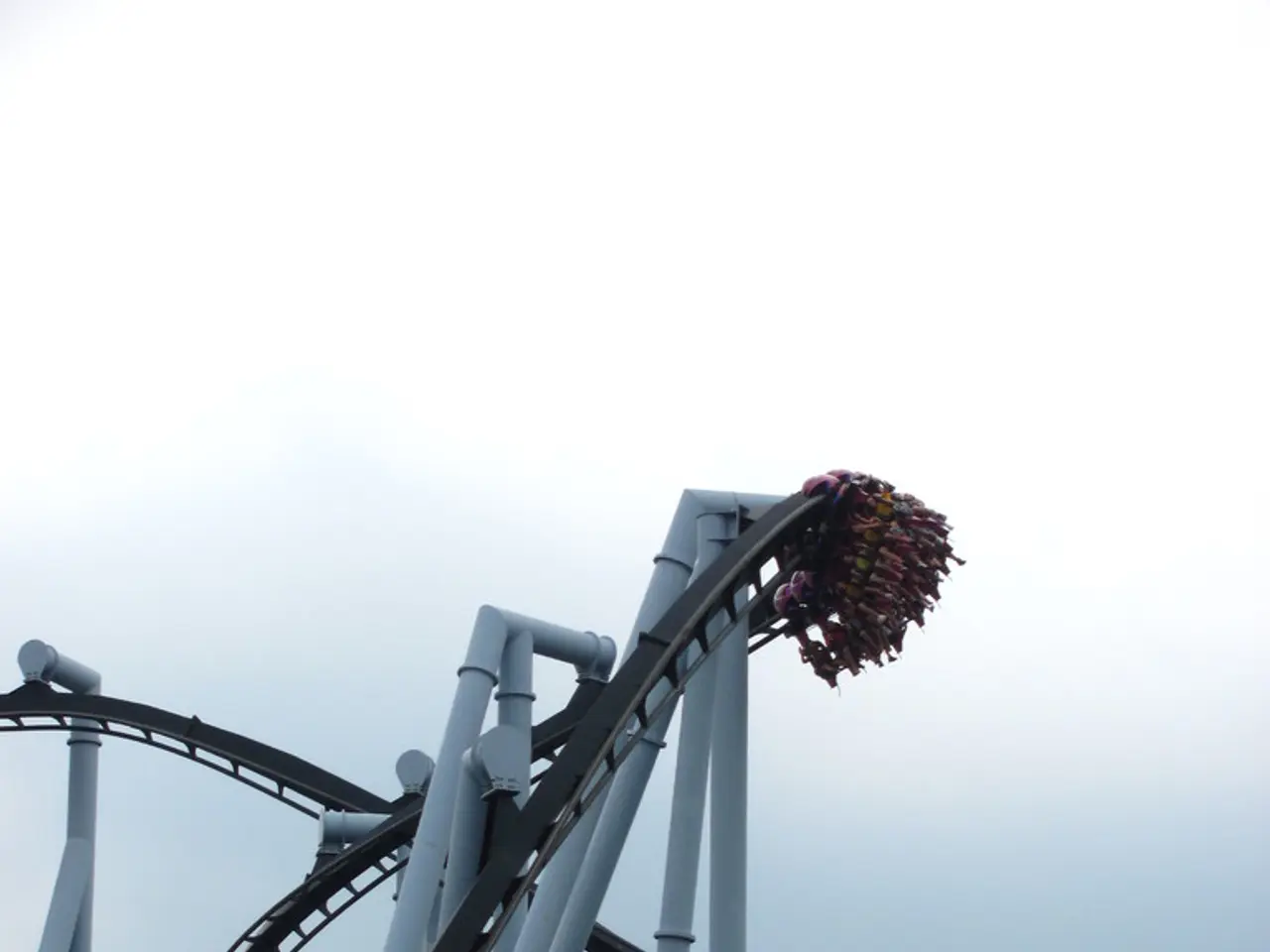Thrill Ride engineered for fatal outcomes: The Euthanasia Coaster aims to end riders' lives
The Euthanasia Coaster, a thought-provoking and controversial conceptual roller coaster, was designed by Lithuanian artist Julijonas Urbonas in 2010. This hypothetical euthanasia device is intended to induce death by subjecting riders to extreme gravitational forces, leading to cerebral hypoxia (lack of oxygen in the brain) and ultimately brain death.
Urbonas, who was a PhD candidate at the Royal College of Art in London at the time, framed the coaster as a surreal proposal to explore euthanasia as an engineered experience. The design can accommodate up to 24 passengers per ride, combining an aesthetic and mechanical experience that moves from euphoria and thrill to a final fatal phase caused by sustained high g-forces.
The Euthanasia Coaster, with its provocative fusion of entertainment and death, raises ethical questions about assisted dying, the role of technology in euthanasia, and the boundaries between art and real-world application. Although purely hypothetical and never constructed beyond scale models, it challenges viewers to reconsider attitudes toward death, control, and the design of end-of-life experiences.
Julijonas Urbonas' intention was not to promote the building of the euthanasia coaster but to stimulate public discussion about sensitive issues. His design process involved collaboration with scientists and experts from various fields, such as aerodynamics, in the development of the coaster.
The concept of the Euthanasia Coaster gained renewed interest in 2021 when a TikTok video explaining the design went viral. The coaster's provocative nature has also inspired creative works, such as the fictional short movie "H Positive" by film director Glenn Paton. In this film, a man commissions the construction of an elaborate machine to take his life and seal his worldly fame.
It is important to note that the concept of the Euthanasia Coaster exists solely in the realm of design and has not been constructed. Physician-assisted suicide remains illegal in all but six European countries and seven U.S. states. Airplane pilots can experience tunnel vision and lose consciousness when exposed to extreme G-forces, a condition called G-LOC. When pilots wake up from G-LOC, they often report "out-of-body" sensations and vivid dreams similar to near-death experiences.
Before moving to London to pursue his Ph.D., Urbonas worked as a ride designer at several Lithuanian amusement parks. His unique perspective on the intersection of art, technology, and death has resulted in a thought-provoking and controversial concept that continues to spark public debate. As of the time of publication, the euthanasia roller coaster remains just a concept.
Technology and gadgets intertwine in Julijonas Urbonas' conceptual euthanasia roller coaster, a provoking blend of entertainment, death, and art. Despite being purely hypothetical, the design demonstrates advanced understanding of aerodynamics and extreme gravitational forces, employing technology to redefine the end-of-life experience.




